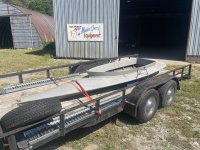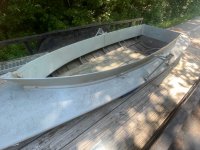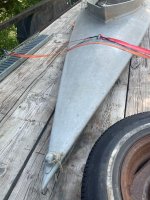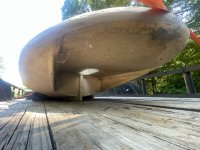Keith Gill
New member
I saved this boat from being burned. It’s been in storage in a barn for 50 years untold at least. I don’t know what year it is. I don’t know the maker no identification marks unless they’ve been painted over. The false floor is camouflage as are the oars, which are pretty cool that I forgot to post pictures of. It is wood planked with canvas covering probably sealed and then painted. The top has multiple layers of paint the bottom I haven’t had a chance to closely inspect. I’m really intrigued by the oblong opening on the rear deck, is this for a small outboard motor that attaches to the combing on the rear of a cockpit? Is it for polling?












